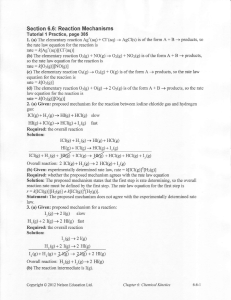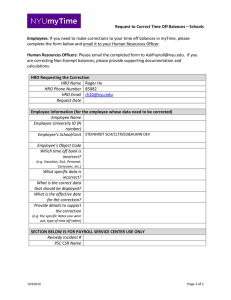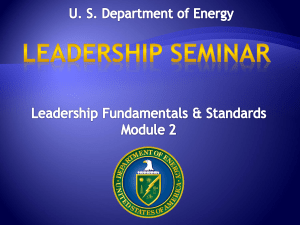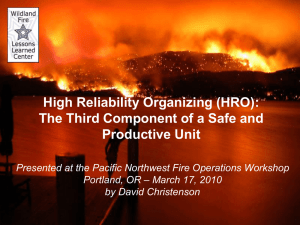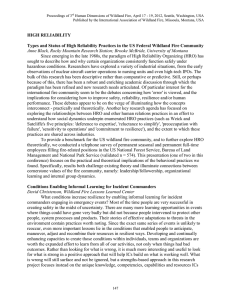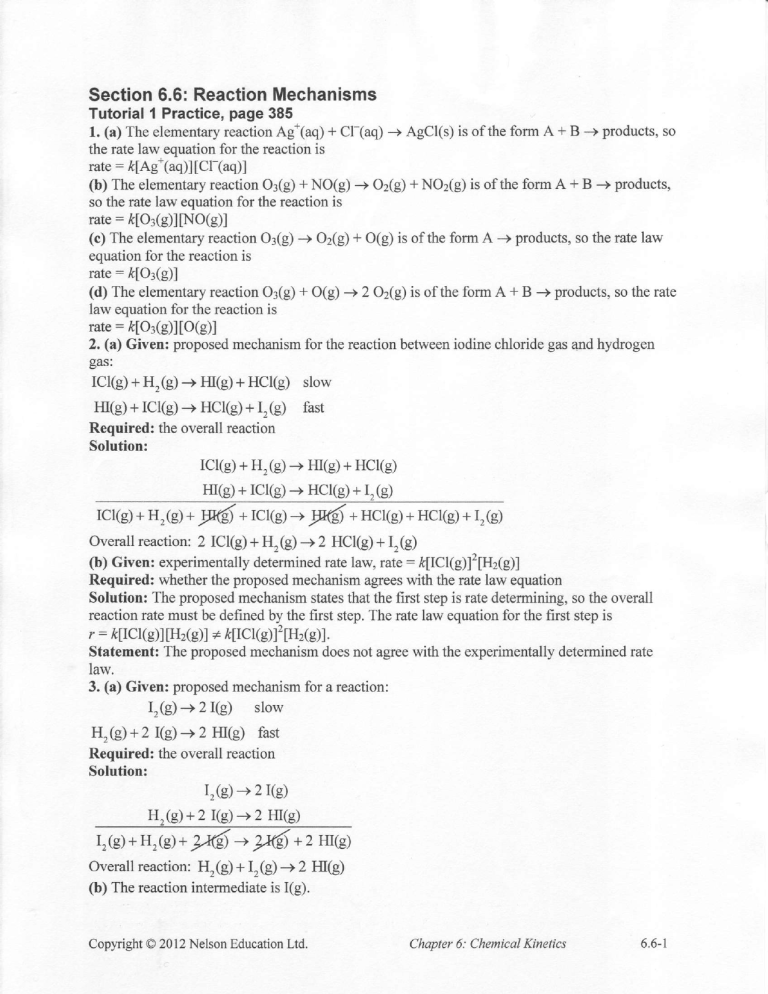
Section6.6:ReactionMechanisms
Tutorial I Practice, page 385
1. (a) The elementaryreactionAg*(aq) + Cllaq) -+ AgCl(s) is of the form A + B -.>products,so
the rate law eouationfor the reactionis
rate = ft[Ag*(aq)ltc(aq)]
(b)TheelementaryreactionO3G)+NO(g)+Oz(g)+NOz(g)isoftheformA+B+products,
so the rate law equationfor the reactionis
rate: klo3G)l[No(g)]
(c) The elementaryreactionO:(g) -+ Odg) + O(g) is of the form A -+ products,sothe rate law
equationfor the reactionis
rate: ft[O3(g)
(d) The elementaryreactionO3(g)+ O(g) -+ 2 Oz(0 is of the form A + B -+ products,sothe rate
law equationfor the reactionis
rate: ft[o3(g)][o(g)]
2. (a) Given: proposedmechanismfor the reactionbetweeniodine chloride gasandhydrogen
gas:
ICIG) + H,(s) + HI(g)+ HCI(g) slow
HI(g)+ICl(s) -+ HCIG)+ I,(c) fast
Required: the overall reaction
Solution:
ICI(g)+ H,(g) --r HI(e)+ HCI(g)
HI(g)+ ICl(g)-+ HCI(g)+ I"(g)
ICI(g)+ H,(g) +
+ICl(g)-+
+ HCI(g)+ HCl(g)+ I,(g)
Overall reaction: 2 ICI(g) + H, (g; -+ 2 HCI(g)+ I, (g)
(b) Given: experimentally
determined
ratelaw,rate= ,t[C1(g)]'z[Hz(g)]
Required: whetherthe proposedmechanismagreeswith the rate law equation
Solution: The proposedmechanismstatesthat the first stepis rate determining,so the overall
reactionratemust be definedby the firct step.The ratelaw equationfor the first stepis
r = ft[Icl(g)][Hr(e)]
+ fttlcl(e)l'[Hde)].
Statement: The proposedmechanismdoesnot agreewith the experimentallydeterminedrate
1aw.
3. (a) Given: proposedmechanism
for a reaction:
I,(s)-+2I(s) slow
-+ 2 HI(g) fast
H,G) + 2 r(s;')
Required: the overallreaction
Solution:
I,(e)-+ 2 I(e)
H,(g)+2I(g)-+2 HI(g)
r,(e)+H,(e)+
)-d ->?6
+2 fl(et
Overall reaction: Hr(g) + Ir(g) -+ 2 HIG)
(b) The reactionintermediateis I(g).
Ltd.
Copyright@2012NelsonEducation
Chapter 6: Chemical Kinetics
6.6-1
(c) The proposedmechaaismstatesthat the first stepis ratedetermining,sothe overall reaction
ratemust be definedby the first step.The rate law equationfor the first stepis r = f[I2(g)], so if
is conect,tle ratelaw equationis r = *[I2@)].
the proposedmechanism
Section 6.6 Questions, page 387
1. (a) An elementarystepis a singlechemicalreactionofa seriesandinvolvesa one-,
two-, or three-entitycollision that cannotbe explainedby simplerreactions.
(b) A reactionmechanism
stepsthatcombineinto a completechemical
is a seriesof elementary
reaction.
(c) A reactionintermediateis a chemicalspeciesthat is both formedand consumedduring a
chemicalreaction.
(d) The rate-determiningstepis the slowestelementarystepof a reactionmechanism.
2. Answersmay vary. Sampleanswer:Baking a cakeis an analogyfor a reactionwith multiple
steps.The reactionmechanismincludesmixing liquid ingredients,mixing in dry ingredients,and
baking. The rate-determiningstepis the baking step.The intermediateis carbondioxide gas,
which is formedwhen water is addedto bakingpowder,oneof the dry ingredients,and causes
the caketo rise asthe gasexpandsasthe batteris heated.
3, It is unlikely that 2 IF(g) + Hz(g)-+ 2 HF(g) + I2(g)is a one-stepreactionbecausethe
simultaneous
collisionoftlree entitiesis rare.
4. (a) Theproposedmechanism
is
o,(s)-+o,G)+o(g)fast
o,(e)+o(e)-+2
o,(e)
slow
The proposedmechanismstatesthat the secondstepis ratedetermining,so the overall reaction
rate must be definedby the secondstep.The ratelaw equationfor the secondstepis
is
r:4odg)l[O(g)], sotheratelaw equationexpectedfor this reactionmechanism
r =rlo:(e)llo(e)1.
(b) Given: proposedmechanism
in (a)
Required: the overallreaction
Solution:
o,(e)-+o,(e)+o(e)
O"(s.t+ Ote)-+ 2 O,(s,)
-+o,(g)+
o,(g)+o,(g)+9(€)
9G) +2 o,(g)
Overallreaction:2 Or(g)+3 OrG)
(c) The reactionintermediate
is O(g).
5. (a) Theproposedmechanism
is
crHnBr(aq)-+ crHn(aq)+ Br (aq)
CoHj(aq)+ H,o(l)-+ C,HnOHj(ad
slow
fast
+ H,O. (aq) fast
C,H,OHj (aq)+ H,OO -+ CoH,OH(aq)
The proposedmechanismstatesthat the first stepis ratedetermining,so the overall reactionrate
must be definedby the first step.The rate law equationfor the first stepis r = ft[CoHnB(aq)], so
the rate law equationexpectedfor this reactionmechanismis r = ft[C,H"B(a{)].
(b) Given: proposedmechanism
in (a)
Ltd.
Copyright@2012NelsonEducation
Kinerics
Chapter6: Chemical
6.6-2
Required: the overall reaction
Solution:
-+ C4H; (aq)+ Bro(aq)
CoHnB(aq)
CnHj(aq)+ HrO(l) -+ C,HrOHi (aQ)
(aq)+ H,O(l) + C"H"OH(aq)+ o.(aq)
CoHrBr(aq)+
$ffi
+ HrO(l)+ C
aq) + HrO(l)
+H,o*(aq)
+ Yr'(usl* g,Fneltt,6 +coH,oH(aq)
+ H.O-(uq)
+ 2 HrO(l) + Br!(aq) + CoHnOH(aq)
Overallreaction:CoHnBdaq)
are C.Hl(aq) and CTH'OH](ad.
(c) The iatermediates
in theproposedreactionmechanism
6. The two requirementstlat mustbe met for a reactionmechanismto be plausibleare 1) the
stepsmust sumto give the overallbalancedequationfor the reactionand2) the reaction
mechanismmust agreewith the experimentallydeterminedrate law.
7. The friend's explanationis incorrect.A ratelaw carurotbe determineddirectly from an overall
becausethe equationdoesnot identifu the rate-determiningstep.
8. (a) Given: proposedreactionmechanism:
NO(g)+ NO(g)-+ N,O,(g)
N,o,(g)+or(e)-+2 No,G)
Required: the overallreaction
Solution:
NO(g)+ NO(g)-+ N,O,G)
Nror(g)+orG)-+ 2 Nor(s)
No(g)
+No(g)
+lnofi +o,G)-+!ffi
+2 No,(z)
Overallreaction:2 NO(g)+ Or(g1+ 2 NOr(e)
(b) The intermediatein the proposedreactionmechanismis NrO, (g) .
(c) The rate law equationfor the frst elementaryreactionis r = e[NO(g)]', andthe rate law
reactionis r = &[N:O,(g)][O,G)].Neitherof theseratelaw
equationfor the secondelementary
equationsmatchesthe experimentallydeterminedrate law equation,r = k[NO(g)]'[O, G)], so
the reactionmechanismis not plausibleandit is not possibleto identifu the rate-definingstep.
9, (a) Given: proposedreactionmechanism:
fast
NHI(aq) -+ NH,(aO+ H.(at)
H. (aq)+ HNO,(aq)+ HrO(l) + NO- (aq)
fast
slow
NHr(aq)+ NO*(ag)+ NHrNo.(aq)
N{NO- (aq)-+ N, (g) + H,O(l) + H. (aq) fast
Required: the overall reaction
Ltd.
CoplrightO 2012NelsonEducation
Chapter 6: Chemical Kinetics
6.6-3
Solution:
NHi(aq)-+ Nu,(aq)+ H-(aq)
H.(aq)+ HNOr(aq)-+ Hro(l) + No-(aq)
NHr(aq)+NOt(ad -+ NH,No-(qq)
'(aq) -+
NHi(uq)+
- y*,6
N"(g) + H,O(l) + H'(aq)
+HNo,(ad+)g1@+
* y<6 +H,o(l)+)g{af +)E+ro'(6 +N,(g)+H,o(l)+H.(aq)
Overall reaction: HNO,(aq)+ NHj (aq)-+ N, (g) + 2 HrO(l) + H- (aA)
(b) The intermediatesin the proposedreactionmechanismare l.{H.(aq), NO.(aq), and
NH3NO.(aq).
(c) Given: experimentallydeterminedrate law, rate = ftlHNodaq)l NH4-(g)l
Required: plausibility of the proposedmechanism
Solution: The proposedmechanismstatesthat the third stepis ratedetermining,so the overall
reactionrate mustbe definedby the third step.The ratelaw equationfor the third stepis
rate : *[NH3(aq)]tNO.(aq)1* ftttil{Odaq)lNH4+(g)1.
Statement: The proposedmechanismis not plausiblebecauseit doesnot agreewith the
experimentallydeterminedratelaw.
Copyright@2012NelsonEducationLtd.
Chapter 6: Chemical Kinetics
6.6-4
